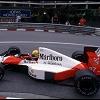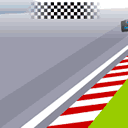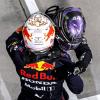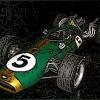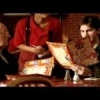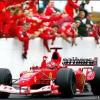There have been a couple of threads regarding the use of Safety Cars (real or virtual) here recently - if fact the topic seems to arise nearly every GP.
Many posters complain about various aspects of the system but very few come up any ideas of a solution.
Maybe it is time to rethink the solution.
The problem.
Race cars have/cause 'incidents', whether that is debris on the track, cars pulling off with mechanical problems or full blown accidents.
Each type of incident requires handling by the marshals and race control depending on the situation.
For many many years these where all covered by yellow flags or as a last resort, a race stoppage.
Unfortunatly, it seems that F1 drivers (unlike drivers is most other lower categories) can no longer be trusted to drive sensibly under yellow flag conditions, so as a result we have added SC and VSC 'solutions', both of which come with disadvantages.
Marshals need as safe an environment as possible when going trackside to deal with an incident, although it is in the drivers interest for marshals to feel safe whilst they deal with the incident as quickly and safely as possible.
The SC solution is disliked on here for many reasons.
1. It confers an advantage to some drivers over others.
2. It neutralises the race for too long, with cars crawling round losing tyre temperature etc. and then the back markers being waved round.
3. In its current implementation it can in itself create further unsafe situations - cars speeding to catch the back of the train as in the Perez case.
The advantage from the marshals POV is that it should give them a decent interval to deal with the problem without the risk of cars passing at speed and/or unexpectedly appearing. This is vital if checking/clearing debris/gravel.
The VSC can have its uses, for example if the incident is a simple pull-off that can be dealt with by a bit of marshal 'muscle' to push it to a safer location and should also be effective if a course vehicle needs to be deployed to tow/lift a stranded car.
It is however not effective for clearing up debris/gravel as it does not give a lengthy window to do the work, and hence just prolongs the clean-up period.
Some drivers complain that they are losing tyre temperatures under the VSC.
Is there a better solution?
One idea I have had is to scrap the SC and enhance the current VSC solution to handle the majority of incidents, by making the VSC system more dynamic (a DVSC) and capable of handling all bar the most serious situations where the only solution is a Red Flag.
Most of the elements to implement it are already in place, it probably only really requires some additional software.
When the DVSC is deployed the system stores the current time intervals between each driver.
All drivers are given a basic sector delta time to slow them down, this can be then be managed to slow the cars as required when approaching and traversing the danger zones.
The system then gives each car individual delta times round the rest of the circuit that quickly and safely bring them up to the back of the train.
The speed of the train can then be managed as required to enable the incident(s) to be cleared up as quickly as possible.
Once the incident is clear the train can be speeded up if required to allow the tyres to be warmed up.
Each cars delta is then adjusted to reset the original gaps so that they cross the green flag line without losing/gaining any advantage.
Advantages of such a system.
RC can control speeds as required without unduly slowing the cars.
It eliminates the need for the SC to pick up the leader.
It eliminates the need for wave rounds for lapped cars.
No advantage/disadvantage is introduced - provided the drivers follow the system correctly.
It should help reduce the no of neutralised laps
It also needs changes to the pit rules during the DVSC period - cars can pit if necessary but are not allowed to exit the pit until the end of the train passes and only have a short window must be waiting at the pit exit before the train passes. Cars that have pitted do not get repositioned for the restart but start at the back of the train.
Throwing it out here for discussion.





